SUPERFICIAL HEAD & NECK
1/18
There's no tags or description
Looks like no tags are added yet.
Name | Mastery | Learn | Test | Matching | Spaced |
|---|
No study sessions yet.
19 Terms
(Neuro)cranium
encloses brain
skull cap = calvaria
cranial base or floor = basicranium
Viscerocranium
facial skeleton
lower part of orbit & down
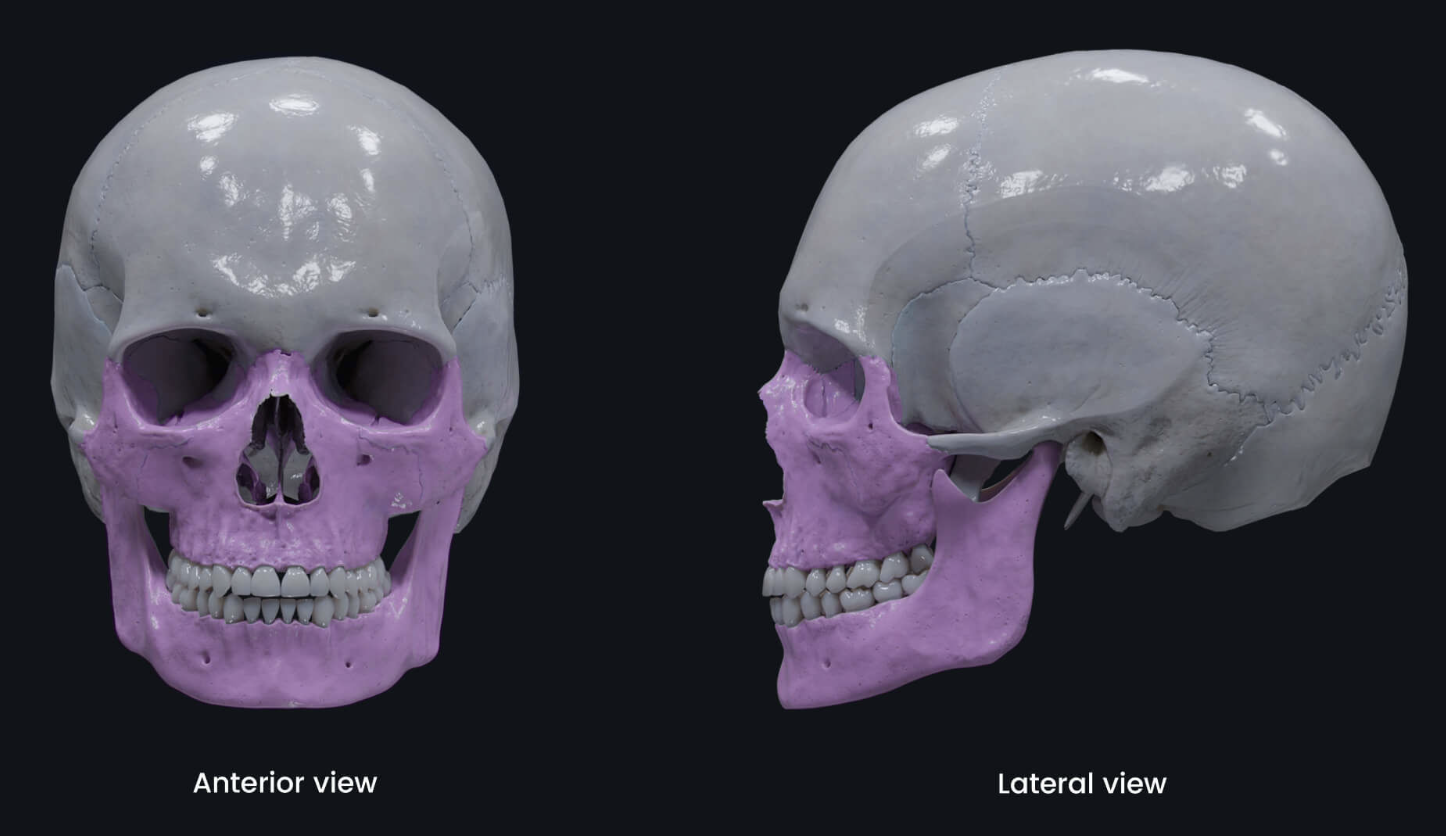
Skull landmarks
glabella
nasion
superciliary arch
sutures
occiput
temporal fossa
pterion
temparomandibular joint (TMJ)
zygomatic arch
hard palate
Glabella
space between eyes
glabellar reflex
Nasion
suture between frontal & nasal bone
Superciliary arch
brow
more pronounced in males
Sutures
coronal
sagittal
lambdoid
squamous
Occiput
back of head
external occipital protuberance
Temporal fossa
includes temporalis M
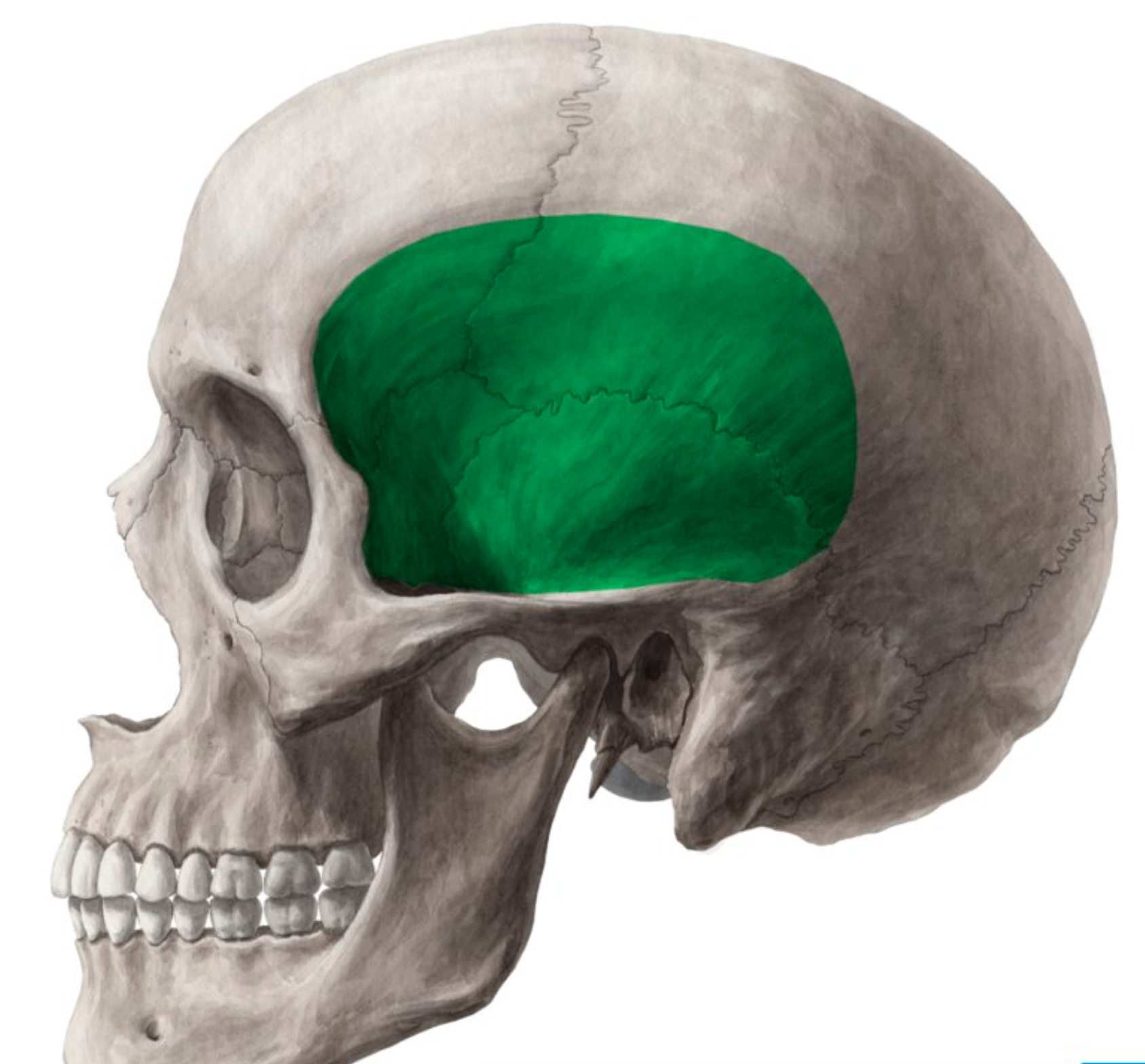
Pterion
clinically important part of jaw where 4 bones meet (parietal, sphenoid, temporal, frontal)
weak point of the skull
underneath is important A
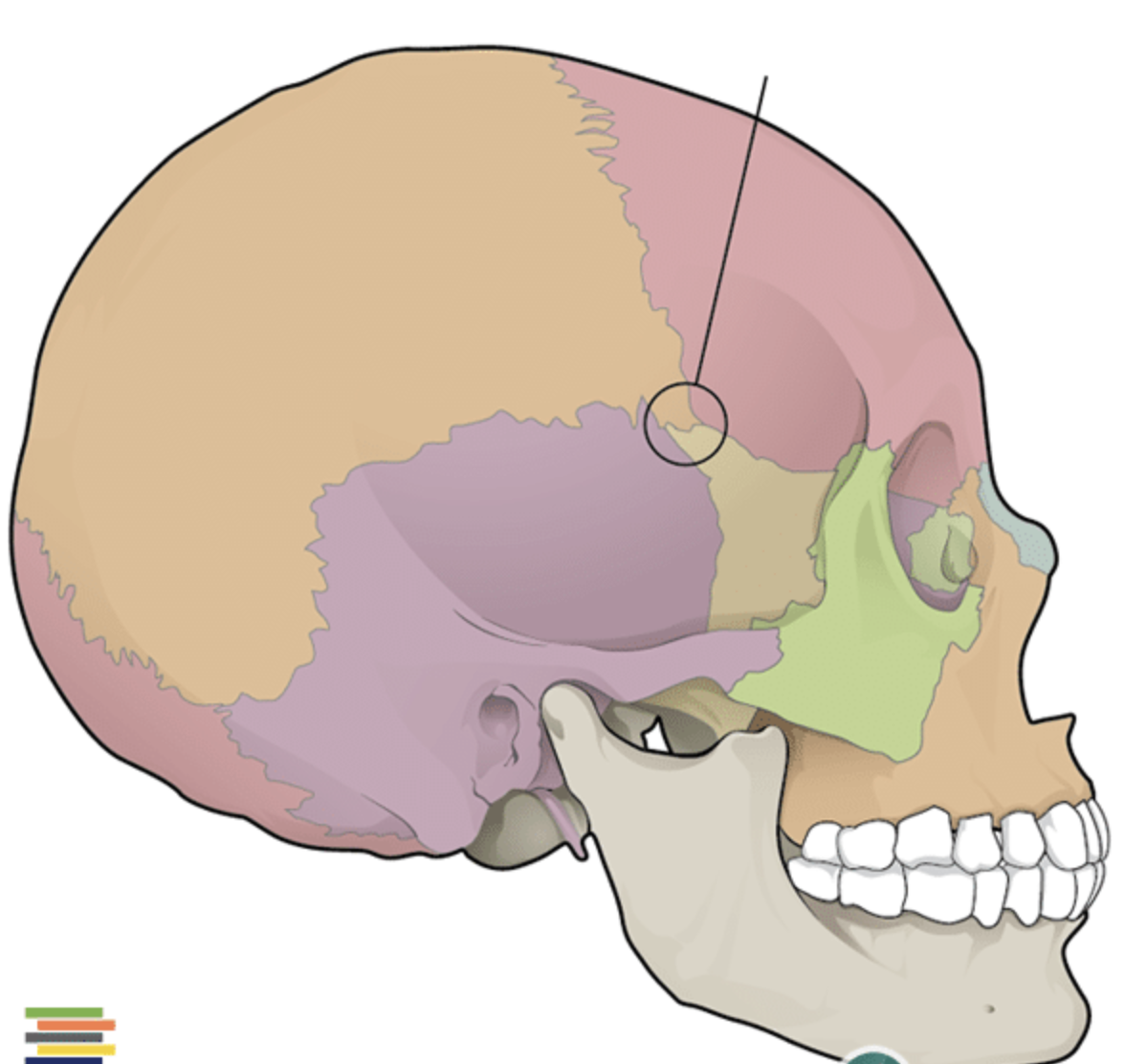
Temparomandibular joint (TMJ)
mandible (jaw) articulates with braincase
Hard palate
palatine process (of maxilla) + palatine
Skull cavities
cranial cavity
orbit
oral cavity
nasal cavity
paranasal sinuses: frontal, ethmoidal, maxillary, sphenoid
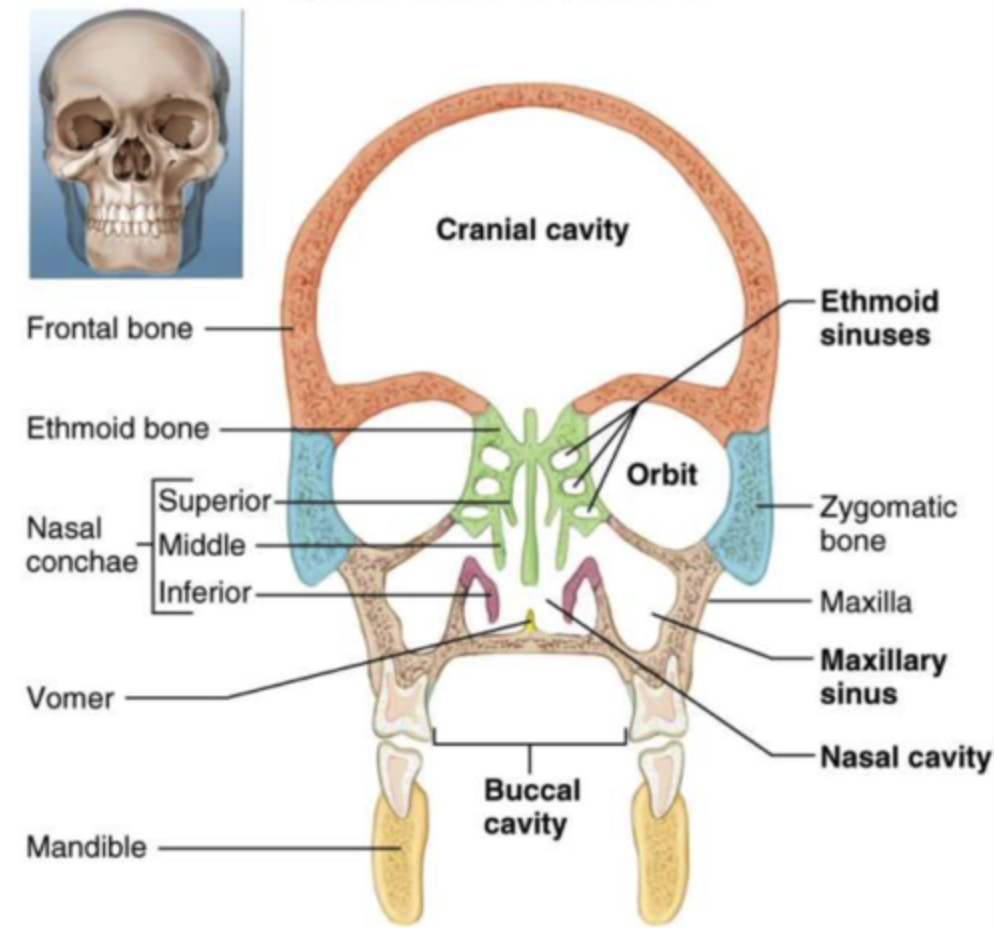
Cranial fossa
conform to the contours of the brain
anterior cranial fossa
middle cranial fossa
posterior cranial fossa
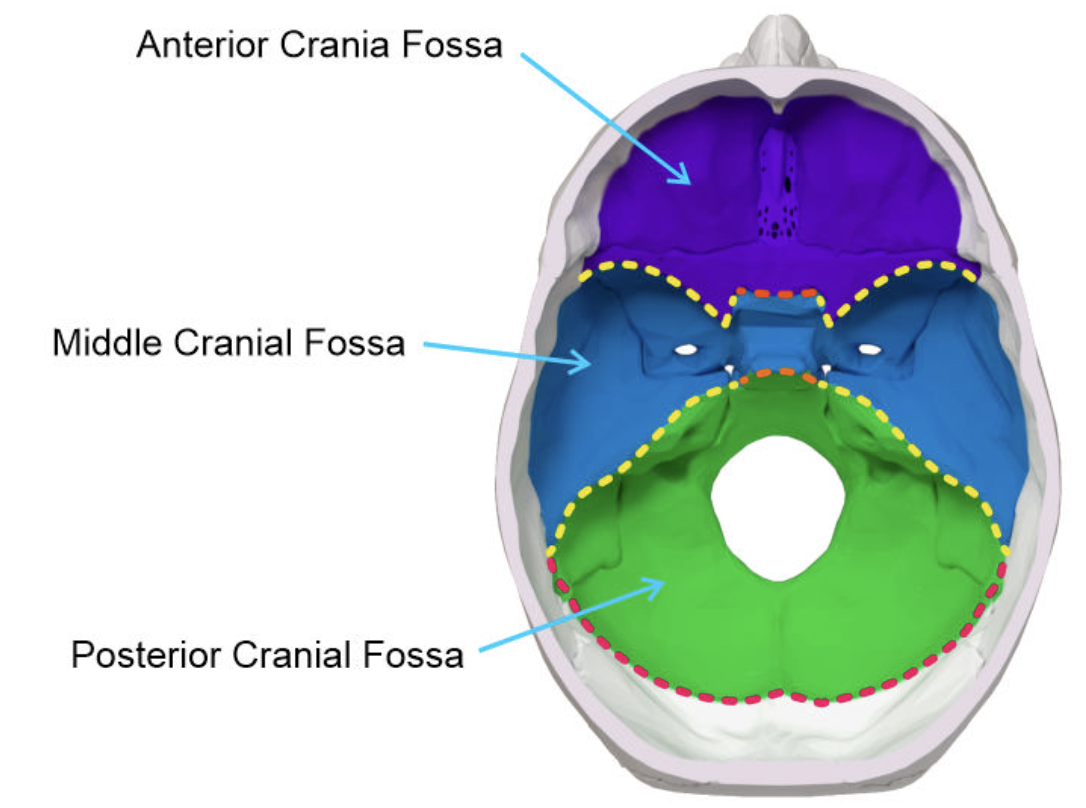
Scalp
five layers of tissues compose the scalp
Skin
CT - dense
Aponeurosis
Loose CT
Pericranium
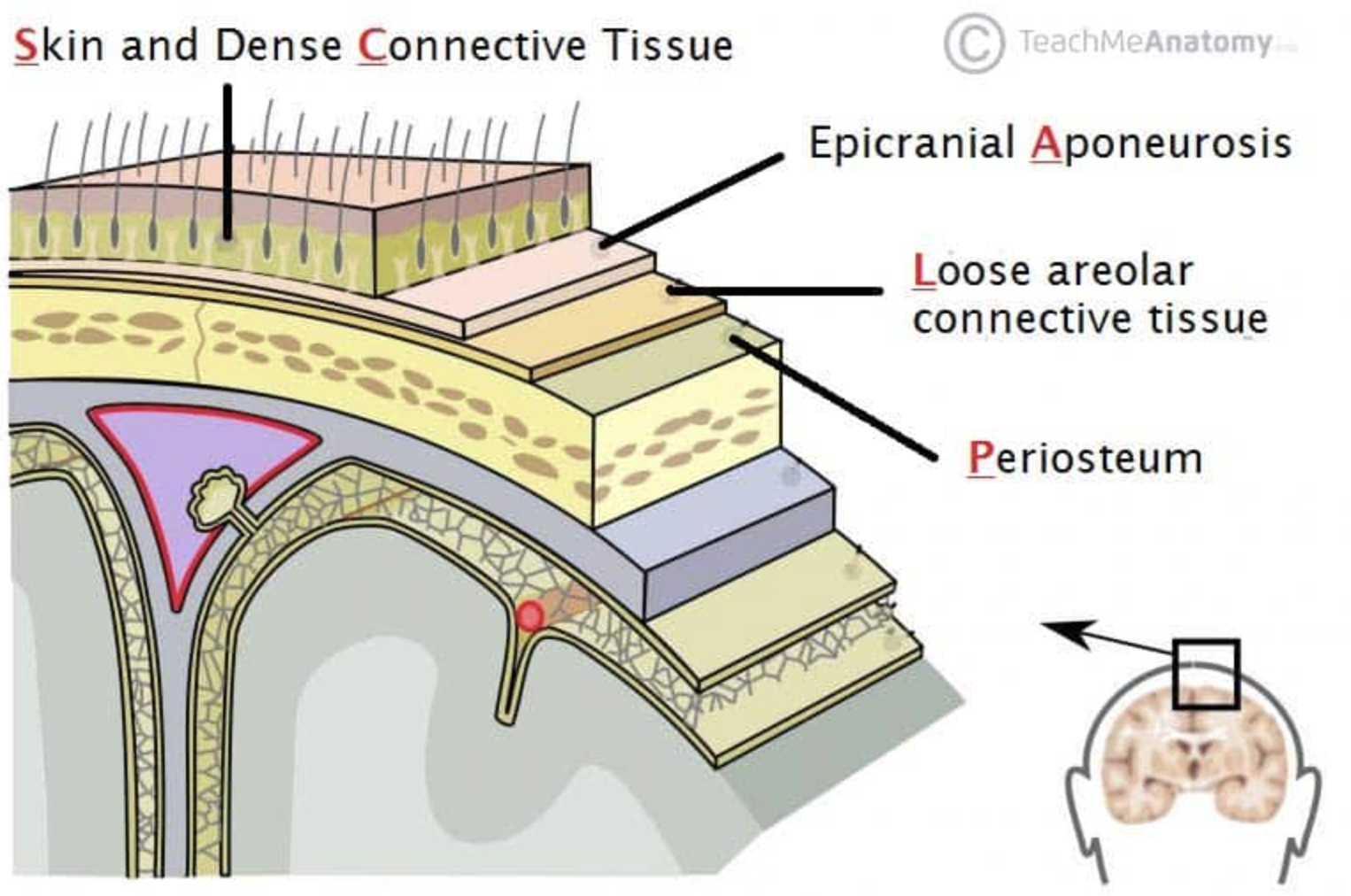
Scalp proper
scalp layers 1-3
Epicranial aponeurosis
= galea aponeurotica
tendinous sheet covering calvaria
Pericranium
dense CT
forms external periosteum of calvaria
Superficial face muscles
muscles of facial expression, sphincters/dilators of orifices
mainly attached to skin of face
supplied by facial N (CN VII)
temporalis, occipital, masseter = not MM of facial expression